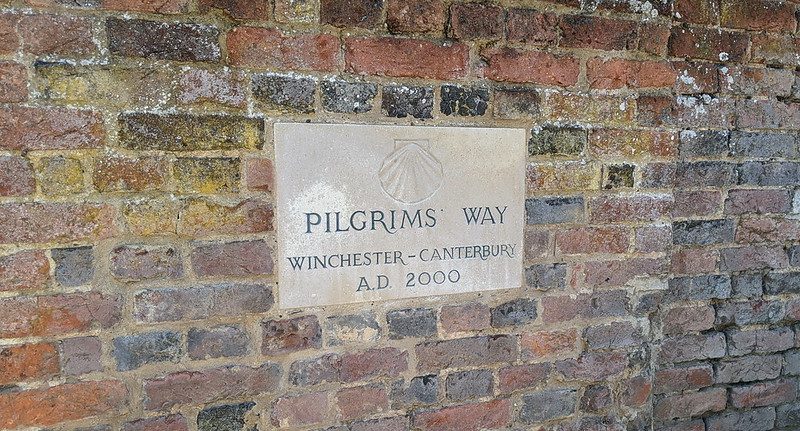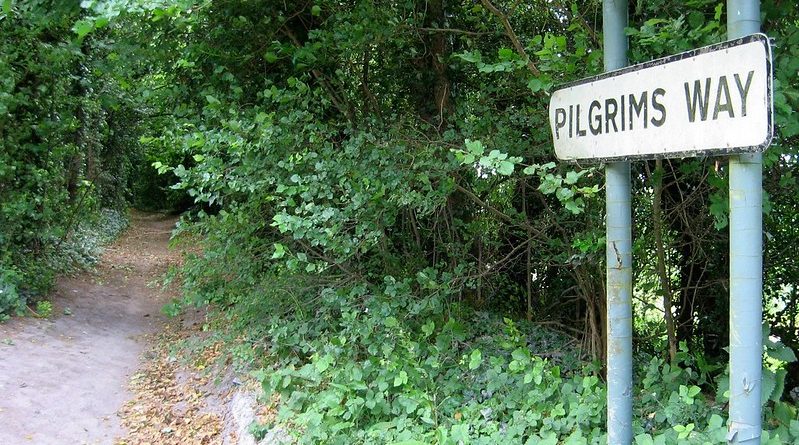You can walk part of the ancient Pilgrim’s Way, the route along the North Downs of Kent followed by the pilgrims who trekked to the shrine of Thomas a Beckett, brutally murdered in Canterbury cathedral in 1170.
The Pilgrims’ Way is one of the oldest routes in Europe. Along the way en route to the medieval city of Canterbury you can also visit Chevening, now the British Foreign Secretary’s official country residence
The Pilgims’ Way journey takes you along the ridge of the North Downs, with spectacular views across the Kent Weald. It also follows the sheltered slopes of the ancient track-way and passes some of the earliest areas of settlement in England. You can visit sites such as the Neolithic megalith Kits Coty and pass through the picturesque hamlet of Harbledown, mentioned in Chaucer’s Canterbury Tales. You follow in the footsteps of Henry II as he made his walk into Canterbury as penance for the death of Beckett. The route passes through the Iron-Age hill fort at Bigbury where Cæser fought the Belgæ in 54 BC. At the River Medway, the Roman Army crossed here when they invaded Britain.
After Lenham the Pilgrims’ Way turns north at Charing and travels via Chilham and the ancient Kings Wood towards Canterbury. Medieval pilgrims would have ridden into Canterbury through the West Gate. In fact the word “canter” is short for “Canterbury gallop”, the gentle pace at which pilgrims approached their destination.
In 1170 Thomas a Beckett was England’s leading cleric, the Archbishop of Canterbury. But when he crossed King Henry II, the King’s knights burst into Canterbury Cathedral and killed him. He was struck so hard on the head, one of the knight’s swords broke.
Becket was made a saint by the Pope in the thirteenth century and Thomas a Beckett’s resting place became a shrine at which pilgrims sought to be healed. During the Reformation in the 1530s, in an attempt to quash pro-Catholic sentiment, Henry VIII ordered that Beckett‘s bones should be burnt. But were the bones really burnt, or did the monks who had guarded them for hundreds of years hide them? Is it possible they’re still somewhere inside the cathedral?
In 1888 workmen made an amazing discovery just a few feet from where Becket had originally been buried. In a stone coffin they found bones laid out in exactly the same way as Beckett‘s had been and the skull showed evidence of a sword wound. The mysterious remains were reburied and remain in the crypt to this day.





